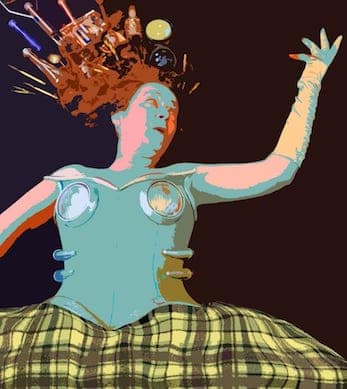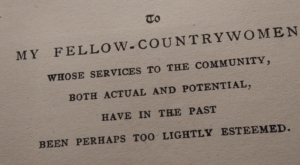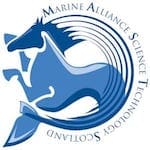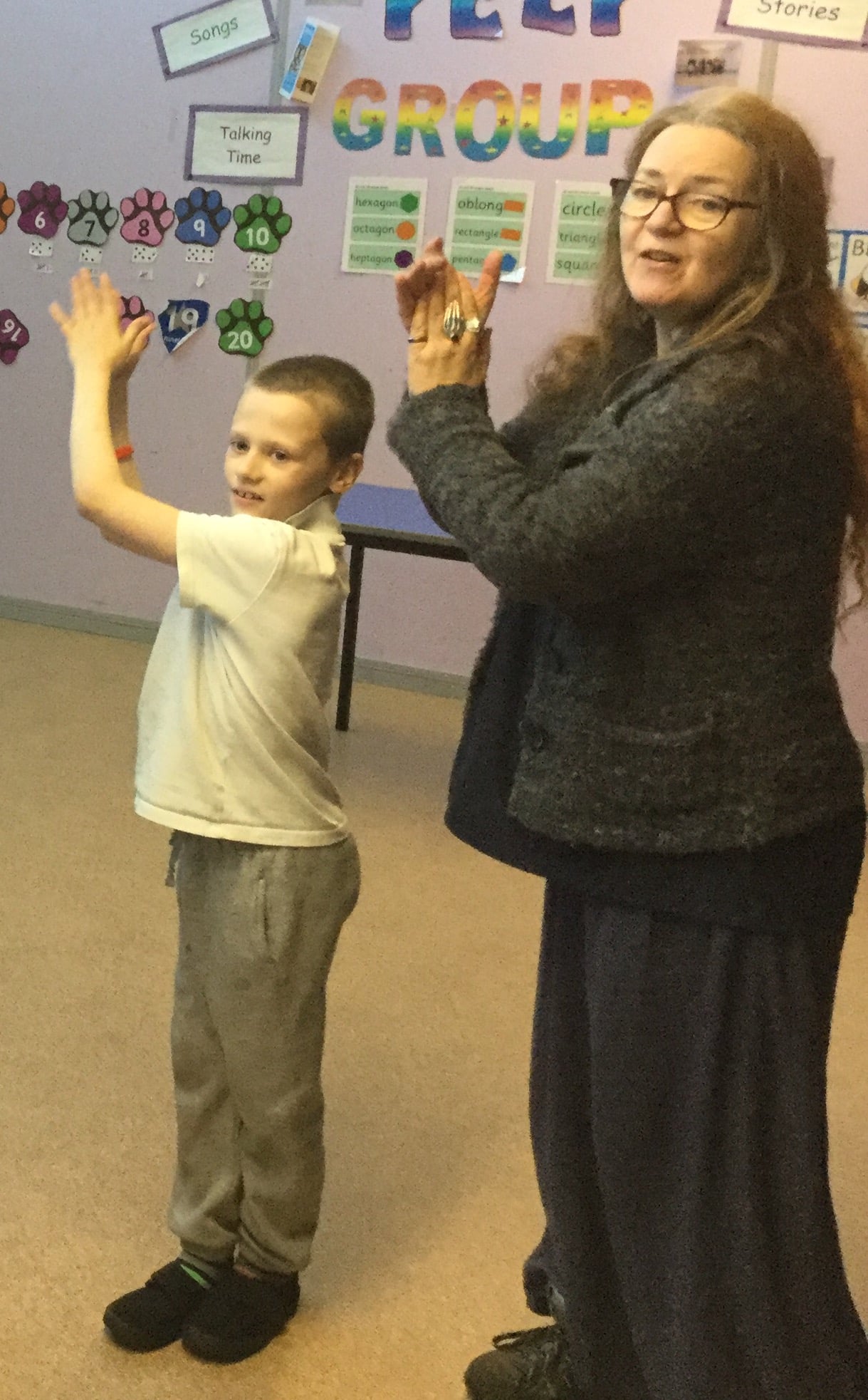Frances M Lynch
Composer and Singer
Image by Herbie Clarke
- BORN 1959 Glasgow, Scotland
- WORKED Many locations in Scotland, England, Wales, Northern Ireland, Europe, Scandinavia, Japan, Mexico, Singapore and the USA
- HONOURS Three Weeks Editors’ Award 2016 “celebrating the ten people, productions and shows that, in our opinion, made this year’s Edinburgh Festival particularly special…. we celebrated Electric Voice Theatre for their truly inspirational show ‘Superwomen Of Science’…” Frances M Lynch is supported by PRS Foundation’s The Open Fund.
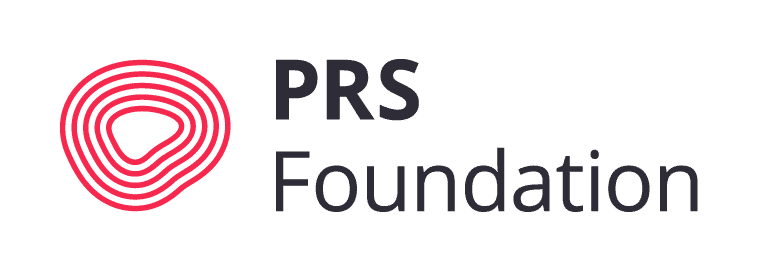
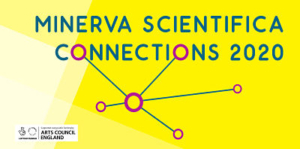
Scientific Connections
I have always been fascinated, if somewhat daunted, by science. It seemed to be a land that I could never understand let alone visit. However, once I started the Minerva Scientifica project in 2013, I gradually found myself surrounded by scientists engaged in a dizzying array of research areas who have the patience and understanding to help me, and other composers, enter at the edges of their worlds.
Compositions
Title: The Superposition of State
Scientist: DR. ISABELLE RIOU
Words by: Frances M Lynch
Written: Feb September 2020
For: Acapella recorded voices with some electronic manipulation
Performed by: Speakers -Jenny Miller & David Sheppard; Singers – David Sheppard (Countertenor), Julian Stocker (Tenor) & Gwion Thomas (Baritone)
Recorded: Samples recorded by the performers individually in their homes then produced by Frances M Lynch & Herbie Clarke at Birnam Studios, London
First Released: Online during the Covid-19 Pandemic, 20th Sept 2020
This music is the result of a collaboration with Dr. Isabelle Riou, a Quantum Physicist who is Project Science Lead, Gravity sensors, Quantum Technologies, Teledyne e2v in Chelmsford. I had an exciting tour of her lab, and almost saw some cold pressed atoms! Then lockdown came and we continued to talk remotely. I found contrasts between how the atoms behaved when held in laser light and the way that waves behave on our shores as our defences crumble in the wake of climate change.
I began by writing a poem which you can see here – which Isabelle critiqued and finally she gave me ideas of how she heard the sound at different parts of the music. The result is this austere but very human track with the poem recited to music based on some of the scientific terms, and waves.
The artist Jack Cornell made an animated film to accompany the music which you can see here.
This commission was supported by the Arts Council Emergency Response Fund (National Lottery).
Frances M Lynch is supported by PRS Foundation’s The Open Fund for Music Creators
Title: Firmament
Composer: Frances M Lynch
Words by: MARGARET CAVENDISH
Written: May 2020
For: Solo Soprano and Tenor Viol
Performed by: Frances M Lynch (voice) and Annabel Malton (tenor viol)
Film: Jack Cornell
First Performed: Online during the Covid-19 Outbreak, 30th May 2020
The text is from her 1671 book Nature’s Pictures:
“Thoughts are like stars in the firmament;
some are fixed,
others like the wandering planets,
others again are only like meteors.
Understanding is like the Sun,
which gives light to all the thoughts.
Memory is like the Moon,
it hath its new, its full and its wane.”
The music was recorded individually in the musicians’ homes and combined and produced by Herbie Clarke at Birnam Studios, London as part of electric voice theatre‘s Minerva Scientifica – Connections 2020 project, supported using public funding by the National Lottery through Arts Council England. Frances M Lynch is supported by PRS Foundation’s The Open Fund.
Title: Dark Matters
Scientist: ANNE-MARIE WEIJMANS
Words by: MARY SOMERVILLE
Written: February 2019
For: Solo Mezzo Soprano, Flute, Clarinet, Bassoon, Trumpet, French Horn, Tuba, Violins and Cellos.
Performed by: Margaret Cameron with sampled orchestral instruments
First Performed: February 18th 2019 at the Old Kirk, Kirkcaldy Margaret Cameron and players from Kirkcaldy Orchestral Society conducted by Graeme Wilson
“Dark Matters” was written and performed as part of a Minerva Scientifica project – “Echoes fae Fife”. It was created in response to the work of astronomer Dr. Anne-Marie Weijmans from the University of St Andrews. She is also an accomplished oboe player, and runs the SHINE project combining arts and sciences.
Weijmans work on galaxy formation includes the intriguing question – Does Dark Matter Exist? She is working on the theory that it does, and we can tell that from the effect it has on stars and their movement.
The music is built from the name of the galaxy Dr. Weijmans first researched – NGC 2974 – which provides all of the notes for the instruments in the first section. (N = B then we have G & C and then the numbers refer to notes from the major scale of C)
The Second Section – FIGURE 17 – refers to a graph from one of her first papers which shows the dark matter curve in relation to the movement of stars and gases. You will hear the short sharp brass interruptions which show where the observations on the curves were made – looking for where stars should be! All the notes in this section are created from the names of the 2 featured astronomers (Weijmans and Somerville) – using the letters as a code for notes in a specific – though unconventional – musical scale.
Dark Matter is at work here – forcing the notes into time and pitch places they shouldn’t have gone!
Dr Weijmans is an enthusiast for the work of Scotland’s own figurehead astronomer from Burntisland, Mary Somerville, whose words I quote in the piece to show how the two women connect over time (and space!)
Mary Somerville (1780 – 1872)
” …..above the surface of the earth, the noise of the tempest ceases and the thunder is heard no more in those boundless regions,where the heavenly bodies accomplish their periods in eternal and sublime silence” (Mechanism of the Heavens)
“……for aught we know, myriads of bodies may be wandering in space unseen by us, of whose nature we can form no idea, and still less of the part they perform in the economy of the universe.” (On the Connexion of the Physical Sciences)
The composer acknowledges support by the National Lottery through Creative Scotland and the Institute of Physics Scotland towards the writing and first performance of this score. The composition was also supported by Hope Scott Trust. The performance was also supported by the Ambache Charitable Trust.
Title: Tystie and the Primrose
Scientist: ELIZABETH MASDEN and ELAINE BULLARD
Words by: Frances M Lynch
Written: Sept 2018 – Jan 2020
For: Solo Voice, speakers and flute
Performed by: Frances M Lynch (voice) with a pre-recorded track of the voices of Music Students from WICK HIGH SCHOOL and flute samples
First Previewed: Lyth Arts Centre, October 6th 2018
The music combines the work of two scientists whose work may at first glance seem unrelated. In the New Scientist in 1998 a study by Elaine Bullard was sited in an article which began:
The Scottish Birds Eye Primrose is confined to the extreme north coast of Caithness, Sutherland and Orkney; it is found nowhere else in the world. It risks extinction at many of its few remaining sites…… Her work on plants which extended through her long life is still valuable as an indicator of changes in land use and climate.
Today, at the Environmental Research Institute at North Highland College in Thurso, scientists study these changes in much the same way – searching and counting – only with more technology at their disposal! Concerned about a development of underwater turbines, DR ELIZABETH MASDEN is part of a team studying the characterful, but neglected Black Guillemot – know in Caithness as the Tystie.
PLEASE CLICK HERE FOR THE PDF OF THE TEXT
The composer acknowledges support by the National Lottery through Creative Scotland towards the writing and first performance of this score. The composition was also supported by Hope Scott Trust. The performance was also supported by the Ambache Charitable Trust.
Title: Salt Tears
- Stone
- Water
- Salt
Scientist: MAUREEN YOUNG
Words by: Frances M Lynch, The Engine Shed Scientist’s data, Alexander Lindsay, John Willcock, Archibald 9th Earl of Argyll, Lady Anna Mackenzie
Additional Music: “Bonnie Isle O’ Whalsay” traditional tune for Lady Sophia Lindsay Scottish country dance created by Jean Attwood Alexander
Written in: 2018
For: Solo Mezzo, Baritone and mixed voices
Performed by: Margaret Cameron, Gwion Thomas and Frances M Lynch
First Performance: The Engine Shed, Stirling, September 18th 2018
The music is created from a number of different sources, but primarily from Data provided by Dr Maureen Young relating to the work she is involved with at Argyle Tower in Edinburgh Castle.
The data is part of the work that Historic Environment Scotland carries out to conserve and restore their buildings, and involves Thermal Imaging, Moisture Analysis and Salt Analysis.
The story is that of Lady Sophia Lindsay who was the step-daughter of the 9th Earl of Argyll after whom Argyle Tower is named. He is said to have been held beneath where this tower now stands during his various imprisonments at Edinburgh Castle.
Part 1. Stone
Argyll’s Lodgings is very close to Stirling Castle where the Earl lived with his second wife, Lady Anna Mackenzie and her daughters – one of whom was Sophia. The permanence of the stone, its vulnerability and its strengths are paralleled in the story.
Part 2. Water
For the stone the introduction of water is dangerous and it also represents the dangers experienced by our protagonists whose lives are disrupted by the intrusion of political strife which will have drastic outcomes for all of them.
Sophia’s courage in bringing a servant to Argyle Tower who swapped places with Argyll, allowing him to go free, almost led to her public flogging, commuted to imprisonment.
Part 3. Salt
She suffered a great deal for Argyll and eventually, at a late stage in life, married his son Charles, but they had no offspring, “a bitter salt ending”. The salt, which can crack stone, is also a metaphor for Argyll’s final downfall and execution at the castle.
CLICK HERE FOR THE TEXT FOR ‘SALT TEARS’
The composer acknowledges support from Creative Scotland, Historic Environment Scotland and the Scotland Foundation (Scotrail) towards the writing and first performance of this score. The composition was also supported by Hope Scott Trust. Frances M Lynch is supported by PRS Foundation’s The Open Fund for Music Creators. The performance was also supported by the Ambache Charitable Trust.
Title: Agnes Metcalfe – To My Fellow Country Women
Scientist: AGNES METCALFE
Additional Music: The March of the Women by Ethel Smyth
Written in: June 2019
For: Speakers, solo voice and choir
Performed by: Dr Patricia Fara, (introduction speaker), Frances M Lynch (all other voices and dogs!)
First Performed: Stroud Green Festival, June 13th 2019
This is the whole story of Agnes Metcalfe. I begin with the dedication she wrote on the front of her first book on Suffrage: –
This first section moves into an arrangement of The March of the Women by Ethel Smyth whose connections to Agnes are explored through the song. The final section is based on her book for children about a dog named Kim – “Memoirs of a Mongrel” by Himself, and the supposition that this dog may well have been at the centre of her protest in court. She refused to pay her dog licence – NO TAXATION WITHOUT REPRESENTATION – and so eloquently defended herself that the judge let her off with a modest fine (others received jail sentences)
The full text is available here
Title: Sarah’s 9 Ladders of Tall Herbs
Scientist: SARAH WATTS
Words by: Frances, Sarah and Elizabeth Blackwell
Written in: 2018
For: 9 solo female voices
Performed by: Frances M Lynch
First Performance: The Big Shed, Tombreck, September 22nd 2018 and performed by Margaret Cameron, Sarah Watts and the Killin Community Choir conducted by Frances Morrison as part of the electric voice theatre “Echoes – Minerva Scientifica” Tour of Scotland.
The music is created from Data provided by ecologist Sarah Watts relating to the work she is helping to carry out for The National Trust for Scotland on Ben Lawers, monitoring the growth of Tall Herbs in specially created plots which prevent the sheep and deer from grazing. The plots are arranged in Transects, or Ladders, and there are 9 of them in the area of Creag an Lochain. The data presents a comparison from two surveys of the site: – one in 1999 by Anna Griffith and the other in 2017 by Sarah Watts and Lindsay Mackinlay.
You can hear the data from 1999 on the left of the stereo picture and the 2017 data on the right.
Of the many species planted the piece focuses on only 5, as they correspond with 5 mentioned and illustrated by Elizabeth Blackwell published in 1737 in “A Curious Herbal”:-
Angelica – Angelica Sylvestris
Ladies Mantle – Alchemilla Glabra
Meadow Sweet – Filipendula Ulmaria
Common Sorrel – Rumex Acetosa
Valerian – Valeriana or Phu
Title: How Life is Lived in the Animal’s World – Lavender’s Blue
Scientists: LAURA FLORENCE and DORIS MACKINNON
Music by: Frances M Lynch
Additional Music by: Marie Dare, Beethoven, Traditional, Liza Honeyman
Words by: Frances M Lynch, Catherine Booth, Robert Burns, Lady Carolina Nairne, Walter de la Mare
Written in: 2018
For: Speaker, Soprano, Mezzo, 3 girl soloists, and piano
Performed by: Catherine Booth (Narrator), Margaret Cameron (Doris Mackinnon), Priscilla Adebambo (Young Doris Mackinnon), Frances M Lynch (Laura Florence and Piano), Ellie Brammer (Young Laura Florence) and Nicole Laidlaw (Lilias Mackinnon).
This mini opera was created for an event at The National Library of Scotland on January 18th 2018 where it was first performed by the same team as part of a project at Clovenstone Primary School, Edinburgh.
It is a reflection on the lives of zoologists, Doris Mackinnon and Laura Florence who lived next door to each other in Aberdeen when they were young girls, and is based on research by Catherine Booth. We imagine that the two scientists wrote to each other until they grew old, and through their letters we learn about their families, work and lives from hog lice, to birds, radio broadcasts to Beethoven and lavender to protozoa!
It includes a full – if interrupted – performance of “The Three Cherry Trees” by Marie Dare for voice and piano, and extracts from Nairne’s “Oh! Rowan Tree!”, Burns’“To a Louse”, Beethoven’s “Für Elise” and “We Shall ne-er meet again” by Liza Honeyman. The Nursery Rhyme “Lavender’s Blue” is used as an important theme.
Title: Storm in C
Scientist: MARJORY ROY
Words from: SYNOP Data Format (FM-12)
Written in: 2017
For: Female Voices
Performed by: Frances M Lynch
World Premiere: A partial premiere took place on 26th October 2017, Eyemouth Hippodrome as part of Scottish Superwomen of Science
This music is part of the Stormsong 1881 Minerva Scientifica Project and was written in collaboration with Meteorologist, Marjory Roy. It is a direct translation of Meteorological data created from the Daily Weather Report which was published by the Met Office covering the period before during and after the storm of 1881.
It is a tribute to the community of Eyemouth, and their extraordinary courage and tenacity in recovering from the Great Disaster of 1881.
Title: Williamina, Astronomer fae Dundee
Scientist: WILLIAMINA FLEMING
Words by: Frances M Lynch
Written in: 2016
For: Solo Voice and Sweeping Brush
Performed by: Frances M Lynch
World Premiere: 1st Aug 2016, The Book Club, Shoreditch, London, as part of events run by the Royal Society
I found the story of Williamina Fleming irresistible – a heroine who rose from difficult circumstances to become a famous Astronomer. I based it on a traditional Jacobite tune – “The Piper O Dundee” as sourced from Hogg’s “Jacobite Relics of Scotland” (1821). It was written for the award winning Edinburgh Fringe show “Superwomen of Science”
Title: A Lament for Invertebrates
Scientist: KAREN DIELE
Words by: Frances M Lynch & Karen Diele
Written in: 2017
For: solo voice, with recordings of the environment at St. Abbs Marine Station and children from Canal View School making funny noises!
Performed by: Frances M Lynch
World Premiere: June 20th 2017, Edinburgh Napier University, Sighthill Campus as part of the Scottish Superwomen of Science Project.
When I first met Karen Diele I was struck by her passion for her work both here in Scotland and in Brazil. She opened my eyes to an underwater world full of sound.
Her research with her colleagues Edward Bolger, Dr Rob Briers, Dr Mark Hartl, Petra Harsanyi, Dr Ted Henry, Nick Mackay-Roberts, Dr Sonja Rueckert, Kevin Scott, Matthew Wales at Edinburgh Napier University and St Abbs Marine Station forms the basis of the text – a series of questions they are addressing about the effects of noise on sea creatures.
The underwater sea world, also inspired by discussions with geo-physicist Dr Lara Kalnins includes the children of Primary 6, Canal View Primary school making sounds like the pistol crab, pile drivers and the final bubble curtain (made with a mixture of vocal sounds and straws in bottles of water) which helps reduce sound underwater.
Title: Muriel’s Eye (M wana wa nnyabo )
Scientist: MURIEL ROBERTSON
Words by: Frances M Lynch, Traditional
Additional Music: Traditional Ugandan lullaby M wana wa nnyabo collected by Robinah Nazziwa
Written in: 2017
For: solo voice and female chorus
Performed by: Frances M Lynch
World Premiere: August 5th, 2017, Edinburgh Festival Fringe, part of “Scottish Superwomen of Science”
Women in all cultures have been creating and singing lullabies since time began. The piece uses a popular Ugandan lullaby collected by Robinah Nazziwa a local music teacher. It is in Lugandan – the language Muriel Robertson learnt from her assistants when she was working on sleeping sickness there. The African material contrasts with the story of her life and work, sung in the style of a traditional Scottish Song.
Education
I was lucky enough to go to school in Scotland at a time when all children were assessed at an early age for their musical ability. A violin was then thrust into our arms, an instrument of torture to our families for years to come.
School provided a rich cultural environment which seemed to naturally lead on to studying singing at the Royal Scottish Academy of Music, where composer Janet Beat inspired my interest in contemporary music which I moved to City University, and Guildhall School of Music, London, to pursue.
Occupations

I sang, mainly contemporary music, with electronics, and just kept doing it until I became good enough to be invited to tour around to Festivals all over the world.
I became artistic director of electric voice theatre and began working with other singers staging very difficult music to make it more immediately accessible.
I had a small teaching practice for a number of years and love the workshop leading I still do with children.
Composing arrived by accident. I was working as music director to a theatre company when they decided they didn’t like the music they’d been given….do……..they asked me to quickly write some and I became their resident composer for 10 years!
Musical Highlights
- Premiering “A Night at the Chinese Opera” by Judith Weir with Kent Opera (and falling over a lot)
- Performing at the BBCSO Cage Weekend at the Barbican dressed as a tramp
- Being allowed to play in a gamelan orchestra
- Our first Minerva Scientifica CD “The Franklin Effect” released by First Hand Records 2016
- Every time my students or school groups make progress
Did You Know?
I can make the sound of an elephant trumpeting…!
An Inspiring Woman
Judith Weir (Master of the Queen’s Music) has been an inspiration since I first met her in London in the 80’s. Much earlier it was a nun who wrote music for us to sing on a weekly basis. I didn’t realise at the time that this was unusual, but I did recognise her work as being really first class.
These days I spend a lot of time finding and performing music by women composers from the past, introducing their work to children and commissioning contemporary women, all of whom are an inspiration.

